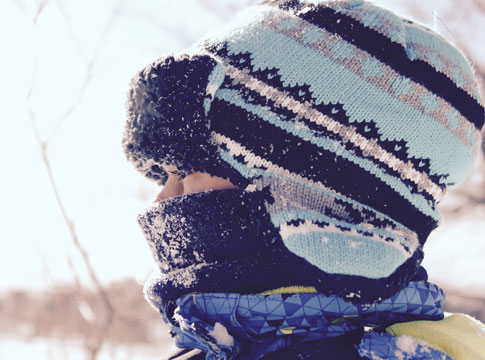Get in touch
Questions about how to save water every day? Please send us an email or call 541-685-7088.
How to prevent frozen and broken pipes
Save yourself the hassle and cost of emergency repairs by locating pipes in areas that have a higher risk for freeze damage. Then take a few simple steps to reduce the risk of burst pipes.
See below for tips for preparing for winter and what to do before you leave for, or return from, a winter vacation. A few preventive measures could save you from expensive repairs.
Prepare for winter weather
- Wrap pipes located in unheated areas - such as an attic, crawl space or garage - with foam pipe insulation.
- Drain water from underground sprinkler piping and backflow prevention assembly. Wrap the assembly with foam insulation.
- Disconnect and drain garden hoses. If you don't have frost-proof outdoor faucets, install an insulated cover.
Locate your water meter:
- Make sure your customer-side hand valve shuts your water off completely.
- Don't wait until you have an emergency to install or replace an easily turned hand valve located on the customer-side of your water meter.
- We offer up to a $150 rebate for a customer-side hand valve installation. Learn more
- Please be aware that we charge a $140 after-hours call-out fee if you ask us to send a water troubleshooter to shut water off at your home between the hours of 5 p.m. and 8 a.m.
During a cold snap:
We suggest that you take a few extra steps when winter temperatures plummet to 20 degrees or less.
- Cover crawl space vents. Remember to uncover the vents as the weather warms.
- Open cabinet doors below sinks located against outside walls. Insulation in the walls may not be thick enough to keep pipes from freezing.
- Turn on a small but steady stream of water at the inside faucet farthest away from where your water supply enters your home. Flowing water does not freeze as quickly as still water.
If your pipes freeze:
You will know that your pipes have frozen if you turn on the tap and no water flows.
- Never use a flame or electric appliance, such as a hair dryer or heating pad, to thaw a frozen pipe.
- You can thaw a frozen pipe by warming towels or blankets in the clothes dryer and then wrapping them around the frozen pipe. Repeat this process until water flows from the tap.
- If your pipe breaks, shut off your water using your whole-house valve or customer-side hand valve at the water meter.
- If you cannot shut the water off, call us at 541-685-7595.
Winter vacation tips
If you go on a winter vacation, these tips can help you return to a comfortable home:
- Shut off water using your customer-side hand valve.
- Turn off your electric water heater at the breaker. If you have a gas water heater, call Northwest Natural for instructions.
- Drain household piping: Turn on all taps until water stops flowing. Flush each toilet.
- Keep the heat turned on to at least 55 degrees while you are away in case there is a cold snap.
When you return from a winter vacation:
- Turn on cold water faucets in your home.
- Slowly turn on the customer-side hand valve.
- When air has been pushed out of the pipes and water flows smoothly from all taps, shut off your faucets.
- After pipes have refilled with water, it is safe to turn on your water heater at the breaker. If you have a gas water heater, call NW Natural for instructions.
- Wait for an hour or so for water to heat before showering or washing with hot water.


